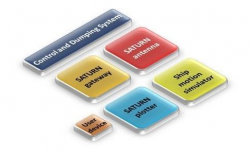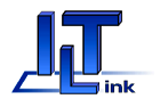
-
StatusOngoing
-
Status date2016-12-07
Objectives
The aim of the SATURN project was to de-risk the design of an innovative maritime user terminal and to develop a proof of concept maritime user terminal able to manage broadcast services (such as Radio and TV) and geo-referenced information (e.g. weather forecasts, security information) provided by DVB-SH (Digital Video Broadcasting-Satellite Handheld) direct channel and interactive services through the ETSI S-MIM (S-band Mobile Interactive Multimedia) return channel using return channel on S-Band.
The SATURN terminal is the first and unique solution proving a half duplex satellite S-Band communication in the maritime context.
The main features of the SATURN terminal are:
- half-duplex satellite communication in S-band
- a half-duplex single antenna (Receiving / Transmitting), which is more compact and easy to install even on smaller vessels than conventional satellite antennas in C or Ku band.
- full interoperability with maritime plotters and personal devices such as smartphones, PCs, Tablets, etc.
- an intuitive web interface to easily manage audio / video streaming and interactive services.
- the possibility to request and receive complete weather forecasts in real time, via continuous access to weather, wind, wave and other useful information while sailing, so as to ensure a safe and pleasant journey.
- distress alerts and messages compatible with the AIS system can be sent.
- receiving audio / video streaming even in the open sea
- it is multimedia
- ts attractive price
In the current market there are specific devices suitable for small boats and which can provide some of these features, such as DVB-T receivers or external modules for weather information but they are of no use when far from the shore. Other solutions based on C-band or Ku-band terminals are more suitable for bigger boats with bigger budgets and no interactive services are available.
The SATURN terminal allows to receive contents while travelling, such as the forecast for a specific area on request, to download map updates on request, to rent a berth in a port, to receive television channels, to download and pay for premium contents. In addition it can be easily fitted on small boats and can be used as a traditional plotter (eg a satellite navigator). In short, with one single terminal, the user has access to a myriad of services anywhere at sea.
Challenges
Main challenges of the project are related to the management of:
- Sea states and induced mobility of the ship
- Marine environment
- Satellite link budget
The sea state causes a complex ship motion on the three axes roll, pitch and yaw. The motion depends on the ship tonnage, length, specific design of the skull and overboard structures.
Motions around the roll axis are mostly caused by the sea waves, followed by the pitch motions and by the yaw motion.
The marine environment is characterized by salinity, rain, high air moisture content and strong winds, which are all causes of potential damages to the externally exposed hardware.
The link budget of the S-band satellite channel on the sea requires an antenna with higher gain than on terrestrial, with a robust pointing system and S-MIM standard compliancy.
Benefits
The main benefits of SATURN terminal are:
- Cost effective solution compared to maritime VSAT;
- Bidirectional communication when the boats are far from the coast;
- Compact antenna;
- Operated from maritime plotters and personal devices;
- Simple interactive web-based user application and interface (for audio, video, streaming contents and interactive services);
- Integration of live TV and Radio;
- Multicast receiver for push-based contents;
- Multimedia repository.
These benefits are focused on end-users of sail boats from 10 to 24 meters and motor boats up to 18 meters.
In such a context, the developed maritime On-Board technology could enable and improve the satellite communications and stimulate the creation of new applications and scenarios in such a market.
The increasing demand for satellite services, in fact, nowadays is mainly satisfied by VSAT solutions, but is not oriented to this market. So, the combination of SATURN and the S-band is an opportunity for new or existing satellite operators, who are looking for new businesses in existing market.
Features
The SATURN End-to-End communication system is composed by ground and On-Board components, which are connected through SATCOM.

The information received is compatible with DVB-SH standards, and is sent using the S-MIM ETSI protocol: both technologies use S-band channels.
The on-board components implemented during the project comprises:
1. a SATURN antenna
2. a SATURN gateway
3. SATURN plotter and user devices
4. a ship-motion simulator
5. a Control and Dumping System

The terminal operates in this way:
- The antenna transmits and receives the satellite signals via the S-band satellite platform.
- The signals are then processed by the gateway, and forwarded to the plotter via an IP connection.
- The demo services developed for the project are located in the plotter, which is the user terminal.
- The Ship-motion simulator replicates the behavior of the waves and the various movements of a boat at sea.
- The Control and Dumping System monitors and controls the components of the testbed ensuring their correct functioning.
Plan
The project started in September 2012 in the framework of ARTES 5.2 ESA projects (Telecom – Technology, Non-competitive industry-initiated activities). The project has been concluded in December 2013.
The project plan was based on following main WPs:
- WP 2: Requirements definition;
- WP 3: Specification definition;
- WP 4: Design;
- WP 5: Implementation and verification;
- WP 6: Integration and test.
More details are available at www.saturnproject.eu.
Current status
SATURN terminal development has been completed and integration tests have been done with successful results.
The performance of SATURN terminal and demo services have been analysed by evaluating several performance indicators and by changing the system configuration.
The main results of the project are here described:
- the SATURN Antenna is able to select the proper radiating element on the basis of the data measured by the Sensor Suite, so satisfying the requirements related to the link-budget considerations;
- the Switching Policy algorithm has been prototyped for the proper switching between the Rx Mode and the Tx Mode;
- the E-SSA packets sent toward the EUTELSAT 10A satellite (return link) are properly transmitted and received also when the antenna is moving emulating a sea-state 4 condition;
- the SATURN Plotter is properly functioning, and it can be easily used to send alarm messages (Sea Alarm) and to visualize weather information (Sea Weather);
- a user device (laptop, iPad) can be used to visualize the web TV (Audio/Video streaming) also when the vessel is navigating with a sea-state 4;
- the software and hardware, both at terminal and HUB sides, implemented during the project, have allowed to reduce the risk of the technology paving the way for future industrialized products





